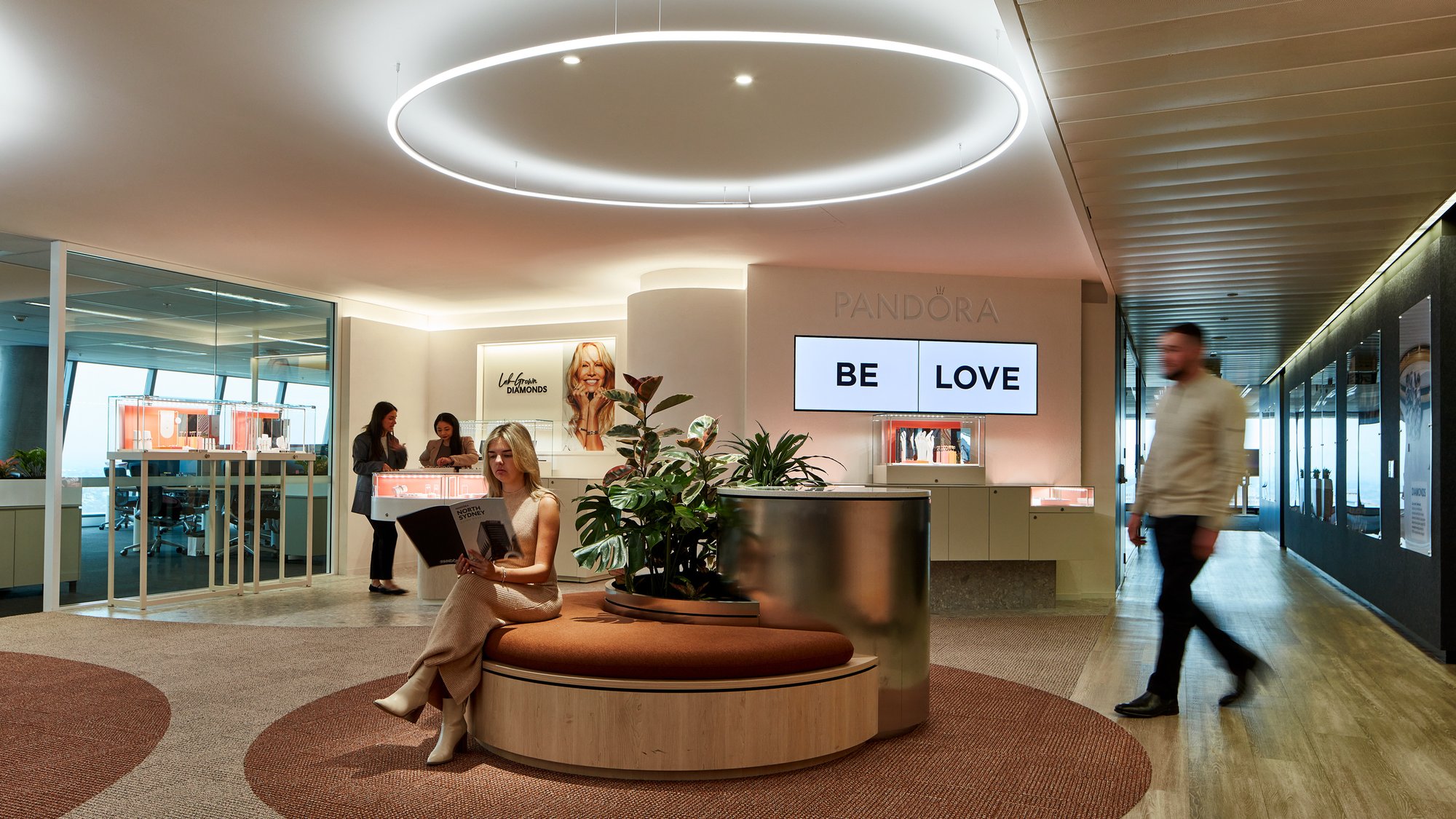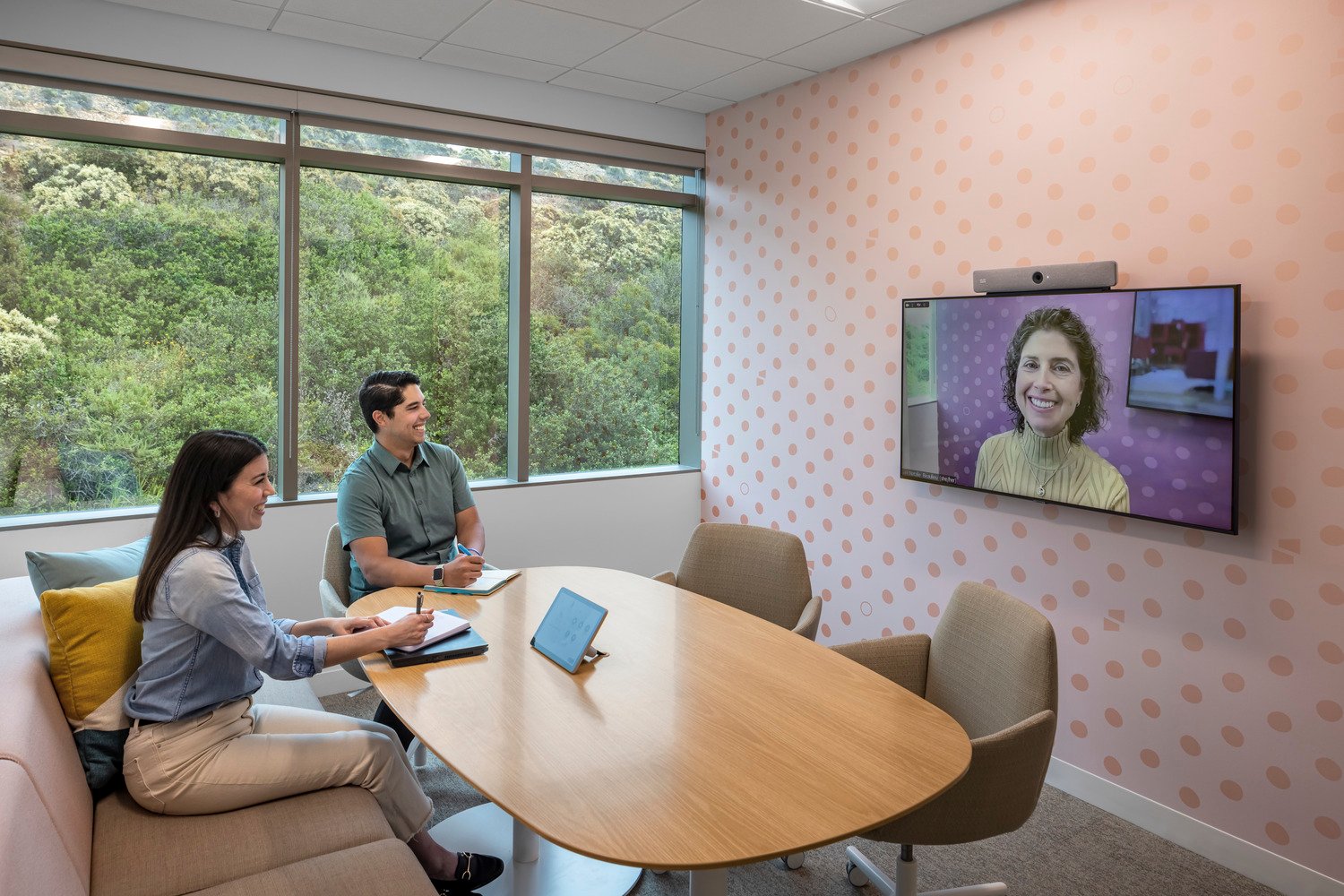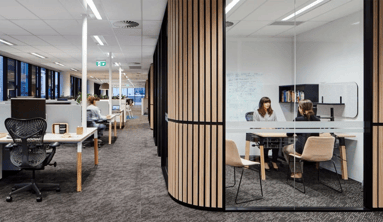Five key learnings to boost workplace innovation in 2025
Innovation doesn’t happen by accident—it requires the right environment.
Our research reveals a concerning trend. Employers are less confident this year (76%) than in 2023 (81%) that their workplaces enable employees to be innovative. This decline signals a pressing need for organizations to rethink their workplace strategy and reimagine spaces to support creative thinking and collaboration.
By addressing key challenges uncovered in our Global Workplace Insights Survey—From Restrictions to Resilience—we’ve identified five actionable strategies to help organizations foster workforce enablement and innovation in 2025. Here’s how to transform your workplace into a hub of progress.
At a glance
- Prioritize focused work with better space design
- Reflect your brand, culture, and values
- Support wellbeing through flexibility and recharge spaces
- Create spaces that support AI and new technologies
- Invest in tech-friendly spaces for meaningful work
Prioritize focused work with better space design
Great ideas require uninterrupted focus. Yet, our research shows that 64% of employees spend their time at desks doing concentration work, often disrupted by noise. Without spaces designed for intentional focus, innovation falters.
Steps to take:
- Provide quiet zones: Create designated focus zones or quiet areas that allow employees to work without distractions, supporting clear, creative thinking.
- Adapt spaces for flexibility: Use design and build principles to create multi-functional areas that transition seamlessly between focused tasks and group collaboration.
Designing creative office spaces for concentration and adaptability enhances productivity and drives consistent innovation across your workforce.

Reflect your brand, culture, and values
When workspaces align with company identity, they energize employees and foster creativity. According to our survey, 72% of employees say they’d spend more time in the office if it reflected their company’s brand and values—a critical factor in maintaining engagement and innovation.
Steps to take:
- Authentic workplace design: Incorporate elements like branded visuals, cultural symbols, or mission-focused themes into the workspace.
- Purposeful environments: Leverage strategy-led design to align office layouts with how your teams collaborate and innovate.
A well-aligned office strengthens connections, inspiring employees to contribute boldly and think creatively.

Support wellbeing through flexibility and recharge spaces
Wellbeing is essential for workplace resilience and creative problem-solving. However, many employees feel unsupported—33% of those aged 18-24 and 26% aged 35-54 lack access to designated spaces to recharge. Flexibility is also a key factor, with 83% of employees saying they’d spend more time in-office if flexible starting times were offered.
Steps to take:
- Flexible start times: Create spaces that support flexible schedules, accommodating the natural flow of activity as people arrive and leave, helping to reduce stress and improve focus.
- Recharge zones: Design restorative areas, such as cozy lounges or wellness rooms, where employees can unwind and recharge.
- Biophilic design: Introduce natural elements, like plants, outdoor views, and natural light, to lower stress while boosting creative energy.
Thoughtfully designed spaces support the mental and physical wellbeing of employees, enabling them to tackle challenges with energy and creativity.
.jpg?width=1500&height=1000&name=AKL_00641_N5_medium%20(2).jpg)
Create spaces that support AI and new technologies
AI is reshaping the future of work, but to unlock its full potential, workspaces must adapt and evolve. Our findings show that 49% of employees in organizations using AI report improved collaboration. By aligning your workplace strategy with workplace technologies, you can foster seamless integrations that inspire innovation.
Steps to take:
- Design AI-focused zones: Design spaces equipped with tools like smart collaboration rooms, integrated sensors, and virtual reality setups. These spaces harness the power of advanced technology to simplify teamwork.
- Develop adaptive environments: Create flexible spaces that adjust to evolving workplace technologies. For example, design modular areas that alternate between AI brainstorming and virtual training sessions.
- Enable digital-physical synergy: Incorporate interactive elements, such as multi-touch screens or digital whiteboards, to strengthen connections between physical spaces and AI-driven platforms.
With strategy-led design guiding your decisions, you can align your physical spaces with cutting-edge technologies, empowering employees to innovate and collaborate more efficiently.

Invest in tech-friendly spaces for meaningful work
Technology enhances productivity, but its impact hinges on how well it’s supported by physical infrastructure. Thoughtfully designed environments not only allow for the seamless use of workplace technologies but also enhance workforce enablement by encouraging focus and creativity.
Steps to take:
- Equip focus-friendly zones: Design quiet spaces with ergonomic furniture, reliable connectivity, and docking stations to seamlessly support employees' tech needs.
- Build hybrid collaboration hubs: Develop spaces with integrated video conferencing systems, soundproofing, and collaborative tools to ensure smooth collaboration for both remote and in-office workers.
- Support process automation: Create back-office environments tailored to tech needs, such as shared kiosks for automation or data management stations.
Investing in spaces specifically for workplace technologies ensures employees can prioritize innovation and focus on high-value tasks without disruptions.

Creating spaces for bold new ideas
Every strategy—from biophilic designs to smart workplace technologies —shares a common goal: workforce enablement. By eliminating barriers, organizations can redefine how their employees collaborate, think, and create.
The future belongs to those willing to adapt. Using forward-thinking workplace strategy companies can unlock the creativity of their workforce and build the foundations for lasting innovation.
Download our full report today for even more insights into how strategy-led design and creative office space approaches can turn your office into a hub of progress and creativity. Discover how to stay ahead in 2025 by building your next workplace that inspire breakthroughs.


.jpg?width=383&height=348&name=AKL_00717_N19_medium%20(2).jpg)